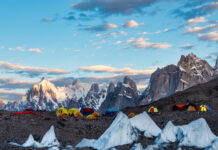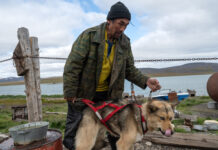Oceans, seas and rivers are the Earth’s prized assets, influencing the survival of flora and fauna, as well as sustaining organisms and all living creatures alike. The first civilisations were shaped by the presence of these resources, and these bodies of water have also been key factors in the progress of trade and geographic exploration.
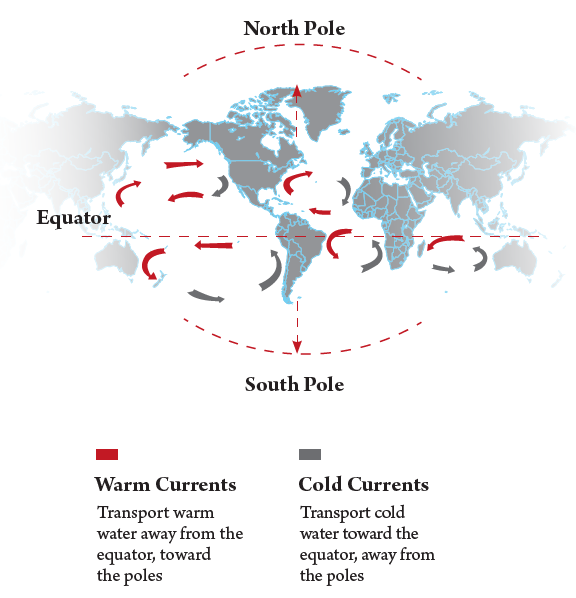
What is an Ocean?
An ocean is a huge saltwater body surrounding the continent that covers two-thirds or 71 percent of the Earth’s surface. It is home to vast aquatic animal species and organisms, as well as coral reefs.
Earth’s smallest ocean is the Arctic Ocean and the deepest is the Pacific Ocean. Various water movements distinguish the Antarctic (or Southern) Ocean from the Atlantic, Pacific, and Indian Oceans.
The temperatures of the oceans are different in the various parts of the world. For example, icebergs are formed by very cold waters near the poles, while waters around the equator are relatively warm.

There are various hypotheses for the origins of water on Earth.
One widely held view is that the atmosphere and the oceans accumulated gradually over millennia with the “degassing” of the interior of the Earth: Water vapour escaping from the molten rocks of the early Earth condensed into rain and filled the basins that are our oceans.
Another theory suggests that the oceans could not form out of the protoplanetary disk because it was much too hot for water to condense. Instead, water was delivered to Earth by impacts from icy planetesimals originating at a distance from the Sun where ice could form.
What is a sea?
Although there are no major differences between a sea and an ocean, a sea is an extension of the ocean partly or wholly covering surrounding the land, and is therefore significantly smaller than an ocean.
The word “Sea” is also used to denote smaller, partly landlocked sections of the ocean and certain large, entirely landlocked, saltwater lakes, such as the Caspian Sea, the North Sea, the Red Sea, and the Dead Sea. These water bodies contain minerals like salts of magnesium, calcium, and potassium, amongst many other elements – some in minute concentrations.
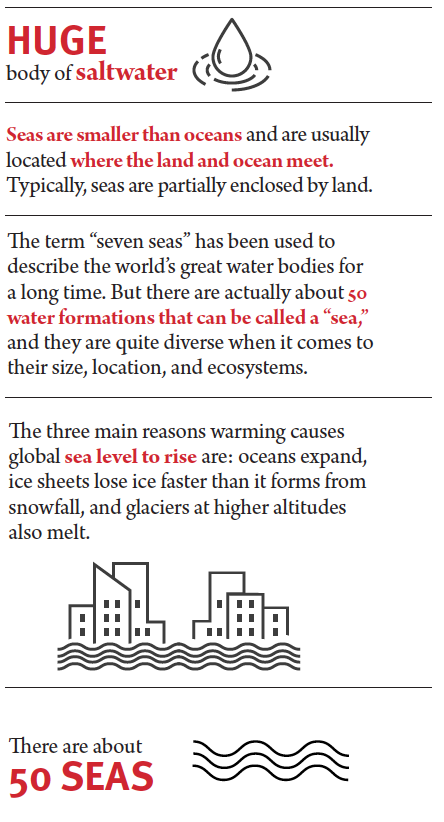
What is a river?
A river is a large, flowing water body that merges into a sea or an ocean. The tributaries of a river are known as streams, creeks and brooks. Rivers are part of the hydrological cycle. The water in rivers comes from precipitation through a drainage basin, surface runoff, and other sources such as groundwater recharge, springs, and the release of stored water in natural ice and snowpack.
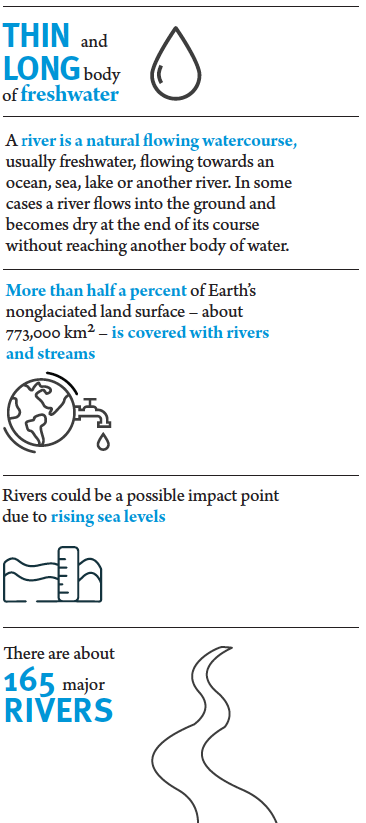
Here is an outline of the widely accepted theory of how seas and oceans were formed billions of years ago:
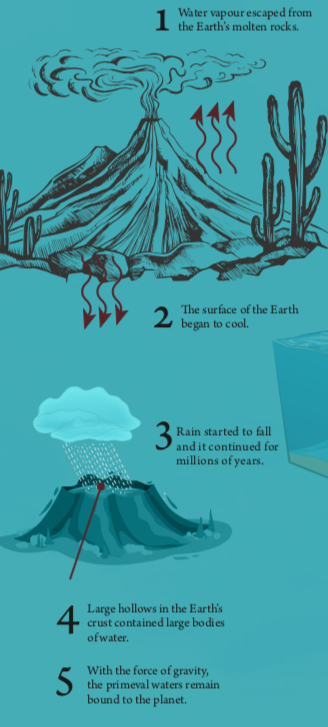
Here is an outline of how rivers are generally formed:
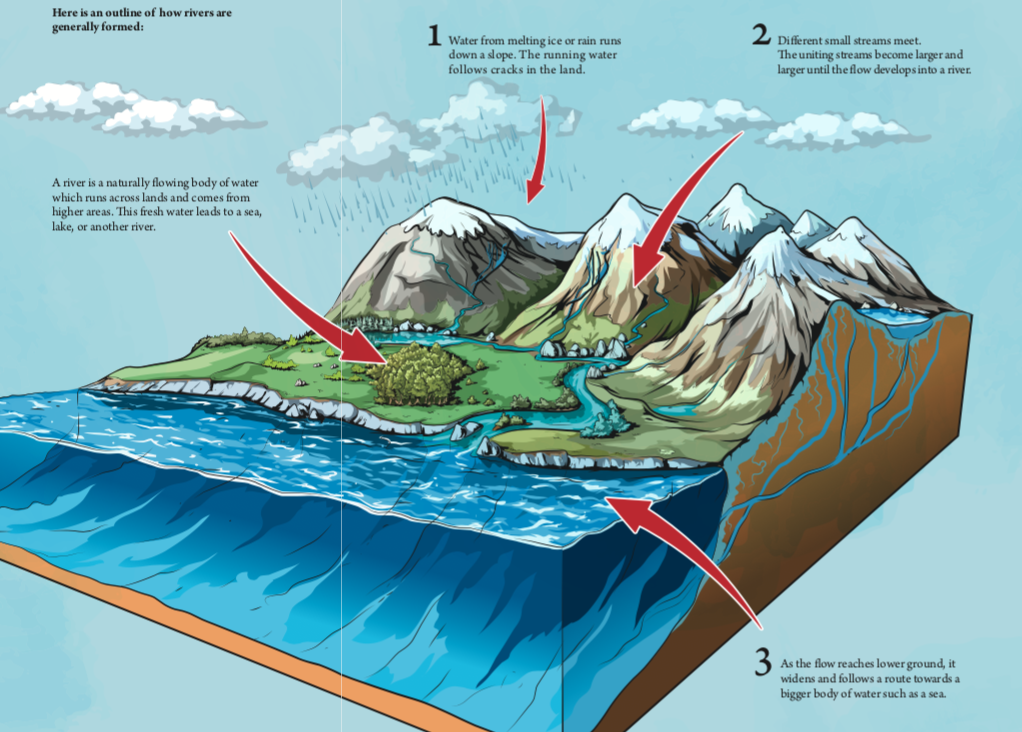
If you liked this post, do share it and tag us on your Social Media! Subscribe to ASIAN Geographic Magazines for more exciting updates and content.
Read more about Water Bodies in our February issue, “The Water Edition” here or download a digital copy here!





